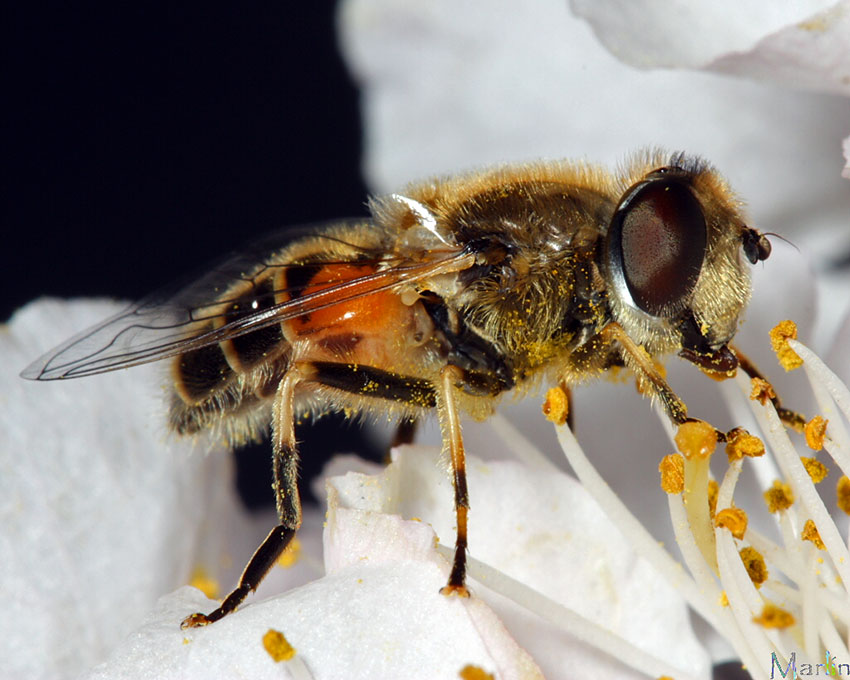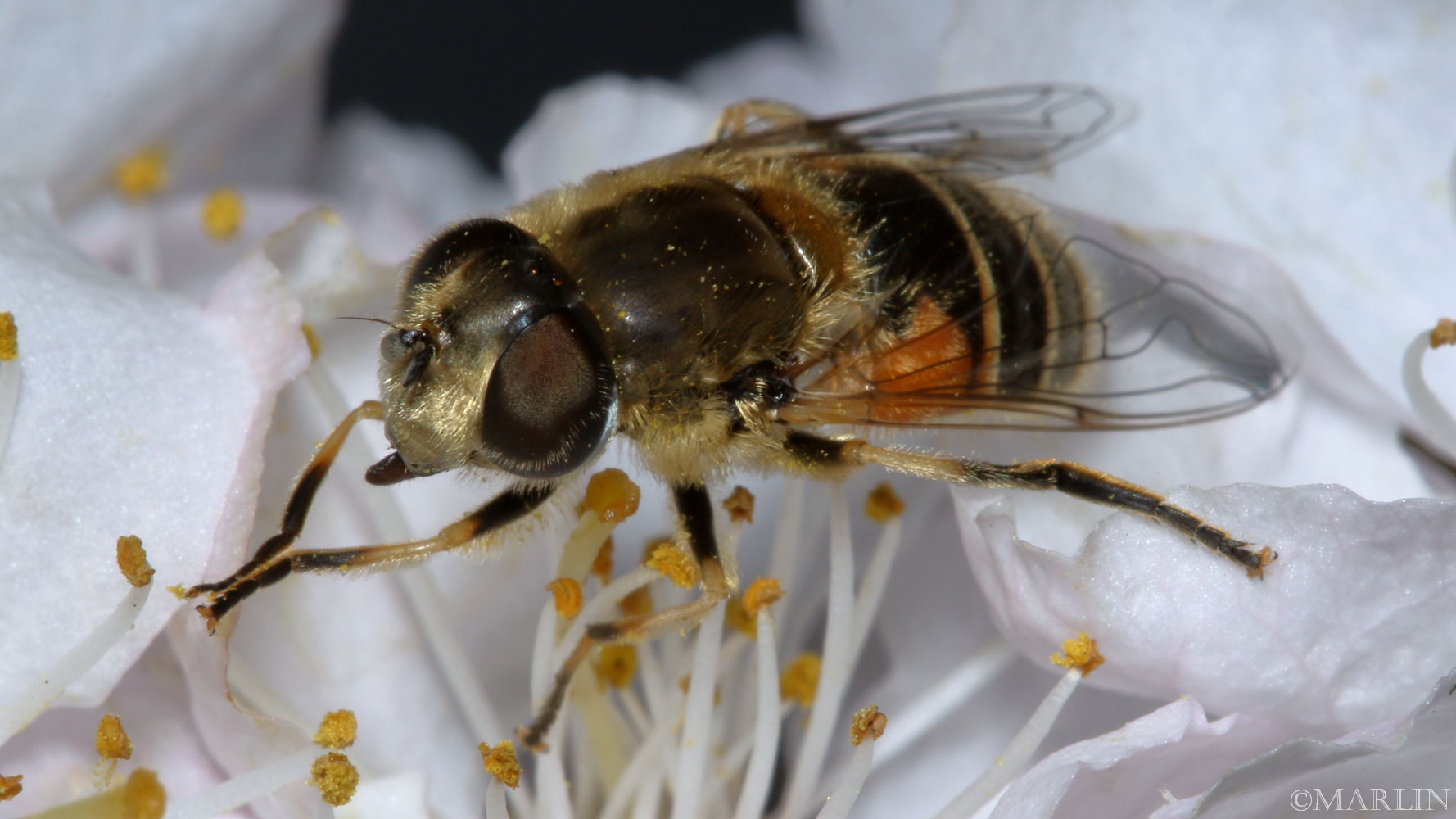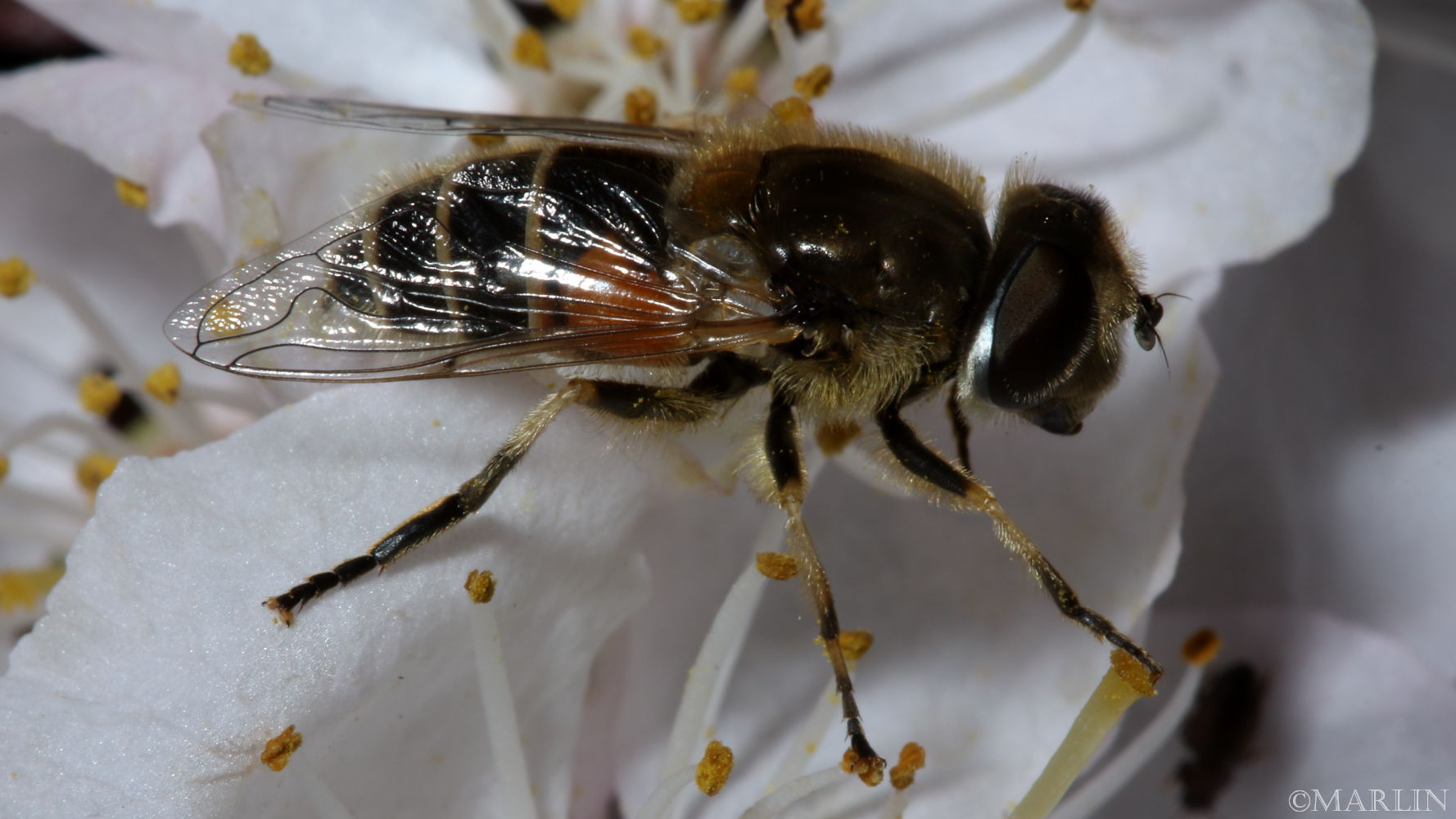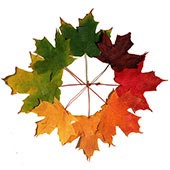Syrphid Fly – Eristalis arbustorum
Live adult Syrphid fly photographed in the wild at Marienville, Pennsylvania
The syrphid flies are a large group of superbly beneficial insects. Most species’ adults mimic bees or wasps — they are either stout-bodied and covered with hair, resembling a bumble bee, or boldly patterned with yellow, orange and black, resembling aculeate (stinging) wasps.
Some species even go so far as to wave their front legs in front of their face to mimic the jointed antennae of aculeate wasps. This phenomenon is called Batesian mimicry, indicating that defenseless organisms resemble or mimic dangerous or unpalatable models.

Adult hover flies require nectar or honeydew and pollen to ensure their reproduction (as well as to power their physical activities), and larvae generally require aphids for breakfast, lunch and dinner to complete their development. However, in the absence of aphids, larvae of some species can subsist and develop entirely on diets of pollen [1].
Quite a few flower fly species feed on aphids (aphidophagous). All are in the subfamily Syrphinae. Common aphidophagous flower flies in California vegetable crops include Toxomerus marginatus, Allograpta obliqua, Syrphus opinator among many others.
Syrphid flies are often used as a biological control in the lettuce fields of California’s vegetable-producing regions, where the fly’s larvae are generally effective in controlling lettuce aphid (Nasonovia ribisnigri). It is primarily the Syrphidae that enable organic romaine growers on California’s central coast to produce harvestable crops.
Syrphidae larvae are, in turn, parasitized by wasps in the Hymenoptera families Ichneumonidae and Pteromalidae [1].
References
- University of California, DANR, “Biological Control Agents for Aphids in Vegetable Crops“
- BugGuide.net, Syrphid Fly – Eristalis arbustorum



